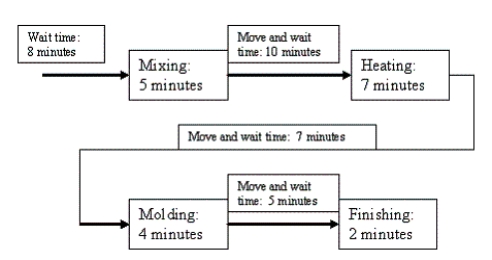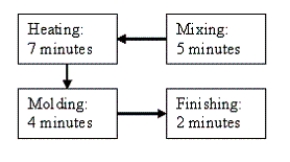Essay
Theis Incorporated has the following departmental structure for producing its products:
A consultant designed a cellular manufacturing structure for the same product:
The times given represent the time required to process one unit of product.
-Refer to the figure.
a.What are the cycle times for each model?
b.What is the bottleneck department and why?
c.What are the production rates of Model 1 and Model 2?
d.Assuming materials costs of $60 per unit for both Model 1 and Model 2 and conversion costs of $200 per hour,what is the unit cost of each model?
e.If the company uses a Product Cost Conversion Cost Chart as follows:
and the average conversion cost = $50,what is the product cost of Model 1,a 5.0 kg unit made of Titanium and Model 2,a 7.5 kg unit made of steel? (Assume materials cost remains at $60 per unit.)
Correct Answer:

Verified
a.Model 1 cycle time = 2 + 10 + 4 + 5 = ...View Answer
Unlock this answer now
Get Access to more Verified Answers free of charge
Correct Answer:
Verified
View Answer
Unlock this answer now
Get Access to more Verified Answers free of charge
Q128: What is an advantage of using partial
Q129: What is the term for the difference
Q130: What is partial productivity measurement?<br>A)is measures used
Q131: Hieber Company produces pants that use
Q132: Which of the following is considered a
Q133: What is the term for a prior
Q134: Information about Hinze Corporation is as
Q135: What is characteristic of lean manufacturing setup?<br>A)There
Q136: What term is defined as the worth
Q137: Information about Holm Corporation is as